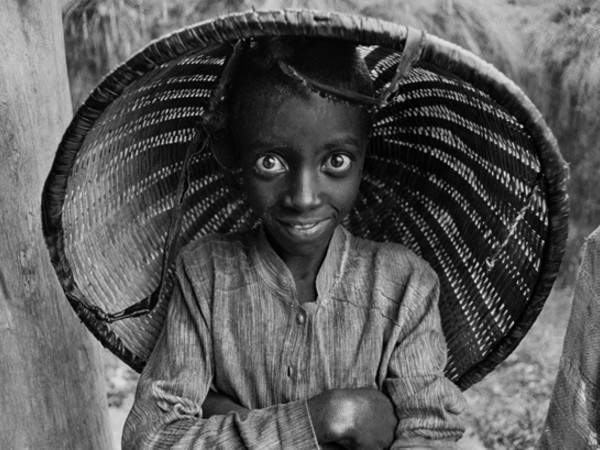From Feb. 10 to March 24, the exhibition Africa opens, a collection of photographs by Sebastião Salgado (Amoires, Brazil, 1944). Curated by Lélia Wanick Salgado, the exhibition will trace the 30-year career of Salgado, defined as the “humanitarian photographer” in that he has dedicated his life to making reportages on the world’s poorest peoples including, precisely, those in Africa, immortalized in the black-and-white images the Brazilian photographer wanted to take to spread his humanitarian message. The exhibition will have two venues, both in Reggio Emilia: Binario49 and Spazio Gerra. The first will display photos Salgado took in countries such as Congo, Burundi, Tanzania, Zaire, Kenya Rwanda, while the second will show the photographer’s images taken in the sub-Saharan regions of Mali, Sudan, Somalia, Chad, Mauritania, Senegal, and Ethiopia.
“Our thanks,” said the mayor of the city of Emilia, Luca Vecchi, “go to Sebastião Salgado for this great tribute of his to our city; with his sensitivity as a humanist in the contemporary world he has grasped the sense of Reggio’s commitment and experience in social cohesion, multiculturalism and the Station district in particular. Our gratitude goes to Casa d’altri, the association that won the tender for the management of the Binario49 space, now redeveloped on the basis of the municipal administration’s political choices of cohesion and participation: an association that conceived and put its hand with courage and great momentum to the project, now realized, of bringing Salgado’s works to Reggio Emilia.”
The first citizen added, " Africa ’s setting up in our city and in particular in the Station Area belies the narrative that is not infrequently univocal and in the sign of the only problematic, which concerns this neighborhood. The Station Area is full of purposefulness and shows that it can generate and welcome beauty, the beauty that art brings along with reflection and provocation, and that is capable of regenerating people and places. I think it is the right place to host the humanism and the great love for the people of the world that Salgado testifies to in his work."
The exhibition curator said, "Africa is a continent known for violence and tribal wars, poverty and natural disasters. But it is also a region of boundless landscapes, breathtaking mountains, plains and deserts, each of which features the most extraordinary biodiversity, from wild animals and ancient plant species to human settlements still completely isolated from modern life. Magical and mysterious, Africa has long awakened the curiosity and greed of foreigners who have arrived there. Especially from Europe, which divided the continent, exploiting its resources and leaving its people without a livelihood. Successive endless wars then prostrated the populations and compromised the African environment. Sebastião Salgado has worked on this continent since the beginning of his career. His first photographic reportage took him to Niger in the 1970s. Soon after, he followed the wars of independence in Angola, Mozambique and the Spanish Sahara. He later photographed numerous catastrophes, some natural others man-made, that wore down African populations, from drought and famine in Ethiopia, Sudan and Chad to the genocide in Rwanda, which forced tens of thousands of refugees into makeshift camps along roadsides, where many lost their lives to dehydration, starvation and disease. Salgado has also documented the work of Africans, farmers and fishermen, and those who have returned home after long years of exile. Recently Sebastião Salgado has returned to photograph another Africa, that of its proud peoples and enchanting flora and fauna. He visited the desert and Himba peoples of Namibia; the Dinkas tribes of southern Sudan; the mountain gorillas of Rwanda; and the Virungas volcanoes that stretch along the ridges of Rwanda, the Democratic Republic of Congo and Uganda. These images are part of a long-term and currently ongoing project entitled Genesis and include black-and-white images of landscapes, plants, animals and human communities. Salgado conceived of this work as a form of research within nature taken in its purest and most intact state. The exhibition, which represents a glimpse of what Sebastião Salgado has seen and experienced in Africa, covers three regions: southern Africa, the Great Lakes of the eastern zone, and the Sahel."
To learn more, you can visit Binario49’s official website.
 |
| Sebastião Salgado's Africa is on display in Reggio Emilia |
Warning: the translation into English of the original Italian article was created using automatic tools. We undertake to review all articles, but we do not guarantee the total absence of inaccuracies in the translation due to the program. You can find the original by clicking on the ITA button. If you find any mistake,please contact us.